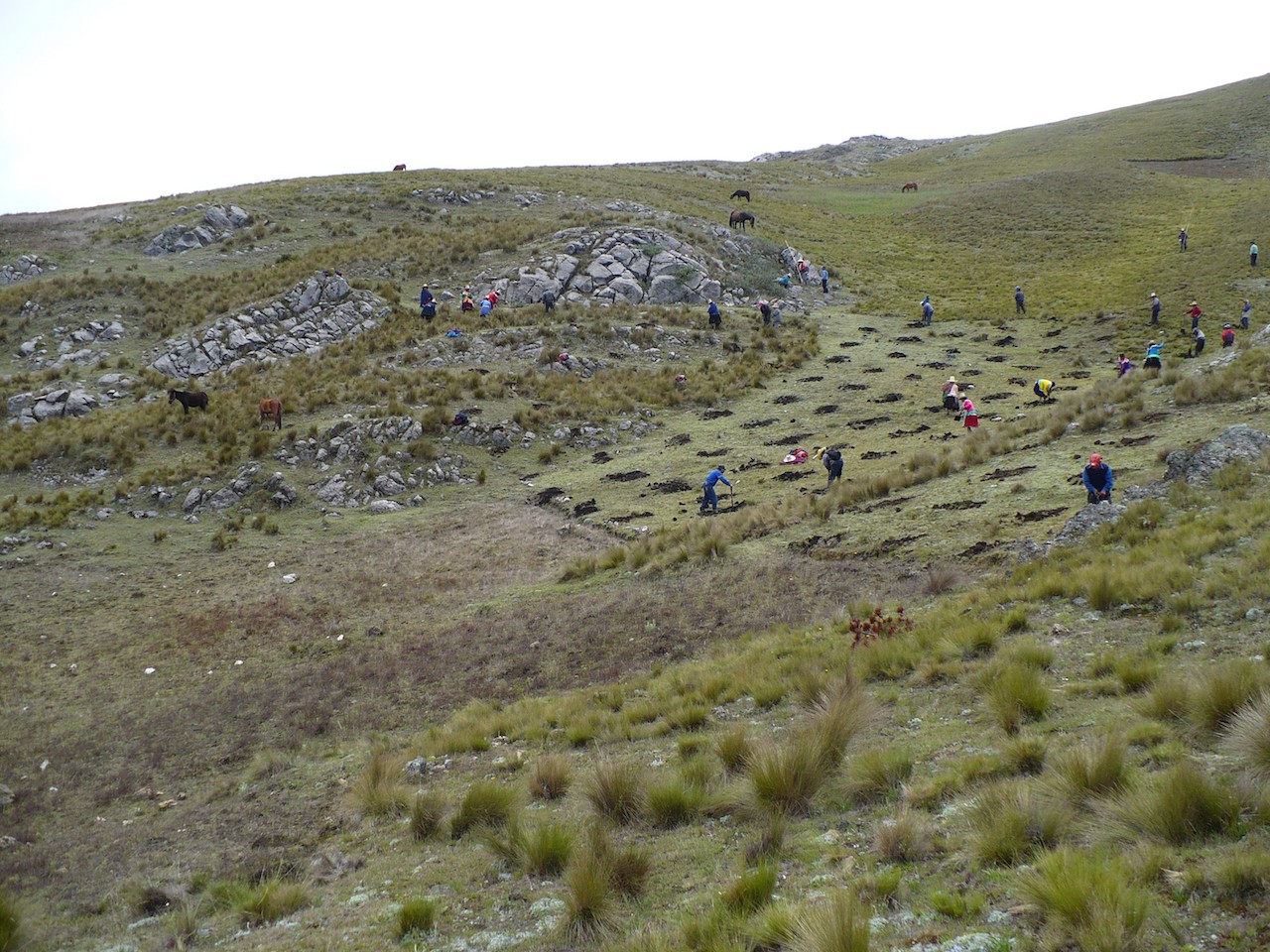The objective of this measure is to prevent water loss by retaining water, increasing its capture, and preventing and controlling erosion during periods when rainfall is more intense. To this end, we are working to protect meadows, water sources and springs with live fences planted with native species of queñuales (such as Polylepis incana or Polylepis racemosa), mainly, as well as colle(Budleja sp.), elder(Sambucus peruviana) and alder(Alnus spp), and stone piles. At the same time, the ecosystem's capacity to continue generating services for the communities and resist climate variations is maintained and increased, thanks to the fact that the organized population cares for, protects and conserves the springs, meadows, grasslands, grasslands and forests of the Jalca or upper part of the basin, and makes good use of the water.
The selection of forest species is based on traditional knowledge about the species that are best suited for the intended purpose. Thus, it is built by combining traditional knowledge with technical knowledge and participatory community work such as mingas, which integrate and increase social cohesion.
